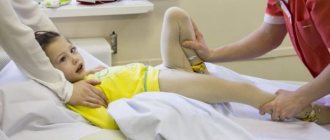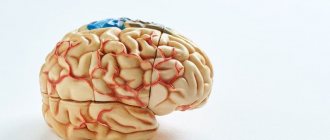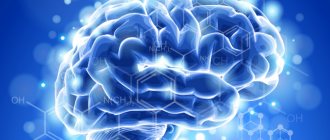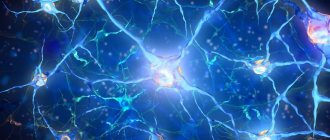Neurasthenia.
What is neurasthenia ?
Especially in today's time, everyone needs to know. Therefore, let's look into this article... At this time, it is no secret that the conditions of modern life often require endurance from a person - both physical and moral. It happens that someone manages to cope with various kinds of loads without falling into a stressful state. But unfortunately, not everyone is able to control themselves in tense and nervous states. In such cases, against the backdrop of stressful circumstances, people often develop a special disorder - asthenic neurosis.
Neurasthenia is a pathology of the human nervous system. It occurs with approximately the same frequency in both men and women. Neurasthenia usually manifests itself as a result of emotional and physical overload, nervous exhaustion, and lack of proper rest. Since neurasthenia is a special type of neurosis, it manifests itself as irritability, increased nervous excitability and a number of secondary syndromes from the internal organs. This disease often prevents a person from living a peaceful life.
Neurasthenia and neurasthenic.
Such patients constantly have abstract thoughts in their heads. It happens that a person wakes up several times during the night. Psychological balance can be disturbed even by small rustles and a feeling of hunger. Exhaustion of nervous emotions can occur even during long conversations. Neurasthenia most often occurs in people 20-40 years old, in women it is slightly less common than in men.
Its development occurs with prolonged physical overstrain (hard work, insufficient sleep, lack of rest), frequent stressful situations, personal tragedies, and long-term conflicts. Somatic diseases and chronic intoxication can also contribute to the occurrence of neurasthenia. Treatment of neurasthenia directly depends on its type. The fundamental point is to eliminate the causative factor of neurasthenia.
Let's consider the types of neuroses:
- Hysteria or hysterical neurosis is a manifestation of hysterical attacks, more common in women. Symptoms of hysteria: dizziness, tears, fainting, loss of voice, convulsions, fainting. Hysteria begins when a person suffering from neurosis tries to get rid of unfair accusations, accusations of unwanted responsibility, demands made against him.
- Neurasthenia - most often occurs due to a banal inability to communicate, as well as overcome barriers to communication. Symptoms of neurasthenia are the inability to concentrate, irritation at the slightest provocation, fatigue, all this can lead to headaches, pain in the heart, and insomnia.
- Phobic neurosis is strong fears that a person experiences in front of some situation or specific object.
- Obsessive-compulsive neurosis (psychasthenia) is a manifestation of obsessive, anxious thoughts and fears. Symptoms: constant anxiety, irritation, tension, pedantry, extreme caution.
- Depressive neurosis is a depressed state, a sharp decrease in vitality, depression, loss of interest in life.
- Hypochondriacal neurosis - this neurosis is manifested by extreme concern about the state of one’s health. A person constantly looks for symptoms of some disease in himself, finds them, goes to doctors and constantly feels painful sensations throughout the body.
The main manifestations of neurosis are:
- Constant feeling of anxiety.
- Touchiness, tearfulness, vulnerability.
- Depressed mood.
- Lethargy, fatigue.
- Insomnia, feeling tired after waking up.
- Rapid heartbeat, trembling hands.
- Aggression, increased excitability.
- Loss of appetite.
- Fast fatiguability.
- Sensitivity to loud noises or bright lights.
If you suddenly feel something is wrong, it is advisable to try to prevent neurosis, because this is much easier than treating it, since sometimes it can take years to treat neurosis in difficult situations.
How to relieve muscle spasm
There are many recommendations and useful tips to relieve nervous tension in the muscles. Most of them are based on a reflex change in the nerve innervation of muscle fibers. So, if possible, it is better to completely stop communicating with those people who cause a lot of unpleasant emotions in a person - colleagues, boss, relatives. Of course, this step is radical and requires the application of certain efforts - dismissal from work, divorce from your spouse.
Less “extreme” ways to relieve muscle tension:
- prepare a soothing tea, for example, with chamomile, lemon balm or valerian and a drop of honey - drink in small sips, while still warm,
- turn on your favorite music and enjoy it until you feel like your muscles have relaxed,
- completely turn off all appliances, close the curtains and lie on the sofa with a wet cold towel on the back of your head - 15–20 minutes is enough to relieve mild tension,
- light an incense stick with your favorite scent and sit in silence,
- For those who are used to actively dealing with stress - how to relieve tension in the head, the best option seems to be a long walk in the nearest park or a visit to the pool.
Each person chooses for himself how to deal with muscle tension due to neurosis - just postponing events for a certain period of time is not worth it. Otherwise, medication will be required.
Symptoms of neurasthenia.
With this disease, it begins with a rapid heartbeat. In general, this symptom is characteristic of all neuroses, which include neurasthenia. Then there is a deterioration in well-being, usually expressed by the inability to sit for a long time, stand in one place, or perform precise, painstaking actions. Many patients complain of increased excitability and rapid mood swings. There is short temper, irritability, and tearfulness. Quite often one state replaces another.
If you do not give yourself proper rest at the first signs of the disease, the symptoms of neurasthenia will only intensify. It is also very important to eliminate the irritant (if one is observed). For example, try not to communicate with a person who causes irritation, avoid a stressful situation that provoked neurasthenia, or take measures to resolve it. Often, long-term unresolved conflicts cause severe neuroses.
People who suffer from this form of neurosis may complain of neuromuscular type headaches. It happens that insomnia or presomnia disorder (regular night awakenings) manifests itself. With neurasthenia, almost all types of neurotic sleep disorders are observed. Signs of general neurotic disorders also appear. Often the disease is expressed in the appearance of hypochondriacal, asthenohypochondriacal disorders, and depression.
Quite often, this type of neurosis is accompanied by increased tendon reflexes. Patients may complain of enlargement of the fingers with outstretched arms, twitching, and trembling of the eyelids. Hyperesthesia of small areas of the skin may also be observed, and muscle pain may be felt. An important sign of neurasthenia is the appearance of sexual disorders. Men typically experience weakened erections and premature ejaculation. And in women, sexual desire decreases.
Along with all the described symptoms, this form of neurosis can also be accompanied by various disorders of visceral functions and psychogenic disorders of the heart. It happens that dysfunctions of the gastrointestinal tract and urinary system appear. There may also be a disturbance in normal breathing.
Causes
Each of the neuroses that arise in a person is a consequence of a high concentration of stress hormones, which are produced in the human body as a response to external aggression. Nature provides such a mechanism only for real danger - the threat of physical violence. Meanwhile, the modern rhythm of life is accompanied by constant tension in the body due to moral dangers - intellectual overload, holding grievances against people around us.
The stress hormone does not have time to be completely utilized, and nervous spasms appear:
- the brain receives a signal about an external threat,
- it is necessary to prepare the body to repel an attack - imaginary or real,
- the hormonal glands receive a command to increase the need for biological active substances,
- a new portion of stress hormones enters the bloodstream,
- the muscles become toned - for the fight.
When faced with daily moral overload, stress disorders, or monotonous, monotonous work, tension in the abdominal or shoulder girdle muscles leads to a deterioration in well-being. The problem becomes widespread and requires medical intervention.
Diagnosis of neurasthenia.
The diagnosis of neurasthenia is made by a neurologist based on the patient’s characteristic complaints, history of the disease and examination. During a clinical examination, it is necessary to exclude the presence of chronic infections, intoxications or somatic diseases, the initial manifestation of which may be neurasthenia.
Neurasthenia can also develop as a manifestation of organic brain damage (tumor, inflammatory diseases, neuroinfections), therefore, to exclude it, the patient is examined on a computer (CT brain) or magnetic resonance (MRI of the brain) tomograph. In order to assess cerebral circulation in neurasthenia, rheoencephalography is performed.
Treatment of neurasthenia.
In the treatment of neurasthenia, the main role is played by measures that are aimed at eliminating or minimizing negatively influencing factors. The main emphasis in treatment is to prevent overload, optimize the work and rest schedule, and ensure a good night's rest. During a conversation with the patient, the doctor explains to the patient the features of his condition and points out the conditions the creation of which is necessary to normalize his mental state.
Psychotherapeutic work is primarily aimed at teaching a person constructive forms of coping with stress and motivating the patient to make radical changes in his lifestyle. The doctor’s goal is to explain that the symptoms of neurasthenia are not a death sentence, but surmountable circumstances when harmful factors are excluded. In this case, the main task of the doctor will be, together with the patient, to identify negative circumstances and take constructive measures to overcome their impact.
Recommended measures to treat the disorder include:
- Strict adherence to the daily routine;
- Sufficient and high-quality night's rest;
- Reviewing the diet and creating a menu of products with the most beneficial substances;
- Sufficient physical activity;
- Daily exposure to fresh air;
- Breathing exercises;
- Water procedures, in particular a tonic contrast shower.
Of particular importance for getting rid of neurasthenia is teaching the patient relaxation skills: autogenic training, self-hypnosis, techniques for relieving emotional stress.
General restorative measures include: physiotherapeutic procedures, massage, electrosleep. The basis of drug treatment: natural adaptogens, stimulants, vitamin and mineral complexes. A patient with neurasthenia must be prescribed B vitamins and magnesium supplements. Among sedatives, preference is given to drugs of plant origin, for example: Persen. As a general tonic in the treatment of neurasthenia, agents that improve tissue metabolism are used, for example: calcium glycerophosphate (Calciiglycerophosphas).
Among medications with a tonic effect, it is advisable to use a stimulant of the central nervous system - pantocrine (Pantocrinum). For hypersthenic neurasthenia, muscle relaxanthelenium (Elenium) is often used in treatment. The hyposthenic form of neurosis often requires the use of tranquilizers, for example: Rudotel.
For any form of neurasthenia, the antipsychotic thioridazine can be used in treatment, however, taking this antipsychotic requires a careful study of the patient's medical history due to a wide range of side effects. The prognosis of neurasthenia with a correctly selected treatment regimen and the patient’s compliance with all medical measures will be favorable. At the same time, of course, there is always a risk of relapse of neurosis, which is why carrying out preventive and restorative measures is of particular importance.
Treatment of neurosis with folk remedies.
Honey. For treatment, use only natural honey. Dilute 60 grams of honey in 500 ml. Drink boiled water, cooled to room temperature, in 3-4 doses, 150 grams per dose. This treatment improves well-being and normalizes sleep. With neurosis, the general condition improves after a week.
Oregano. Prepare an infusion of oregano herb, take two tablespoons of the herb and pour two glasses of boiling water over them, leave for about an hour, strain and take half a glass three times a day before meals. An infusion made from oregano herb has a calming effect. Remember that you should not take oregano infusion during pregnancy, as it contracts the muscles of the uterus and this can lead to abortion.
Valerian. To prepare the infusion you will need dry crushed valerian roots. You need to take two tablespoons of these leaves and pour two glasses of water, put on fire and bring to a boil, let it simmer for a couple of minutes, then leave for about 20 minutes, after which we filter the infusion and, if necessary, add boiled water to the infusion to bring infusion to the original volume (two glasses). We take an infusion of half a glass two or three times a day, half an hour after meals, an infusion of valerian helps with neuroses, neurasthenia, nervous excitement, headaches, insomnia, and mental fatigue.
Geranium. If you suffer from insomnia, as well as high blood pressure, if you have irritability, you should have geranium in your home. A number of studies have been conducted, and they show that if you inhale the aroma of geranium, then after two to three weeks, sleep normalizes, the nervous system is strengthened, and high blood pressure is reduced.
Melissa. Prepare an infusion of lemon balm leaves, take two tablespoons of lemon balm, pour two glasses of boiling water over them, let it steep for fifteen, twenty minutes, then strain the infusion, and take half a glass twice a day. An infusion prepared from lemon balm herb is taken for neuroses, nervous tremors, and heart rhythm disturbances. Melissa also reduces blood pressure and heart rate.
Massage for neuroses
When the patient receives massage sessions, his condition gradually begins to improve, while he feels calm and positive emotions appear. Massage has a beneficial effect on the child’s blood circulation and relieves muscle hypertonicity. Improves metabolism and metabolic processes in the body. For neurological disorders, in most cases, massage is done in dim lighting and includes calm meditative music. The patient relaxes as much as possible, the tension goes away. Massage for neuroses is usually performed in the following sequence:
- the first zone to be massaged is the collar zone;
- the second zone is the back;
- then massage the lower extremities;
- fourth zone - chest;
- The final area is the stomach and arms.
During the massage, a stroking technique is performed. Tapping and pinching are strictly prohibited; it is necessary that the massage therapist’s hands slide smoothly over the patient’s body and do not cause pain. For massage, use essential oil or a special cream. To relax a person as much as possible, it is customary to turn on color music in the room. For hysteria, the most effective massage is the collar area. These include the following techniques:
- stroking: the massage passes from the shoulder joint to the seventh cervical vertebra, down along the spine to the lower edge of the scapula, then to the shoulder joint forward to the center of the sternum and again back to the shoulder joints;
- shading on the shoulder blades;
- planing from the sternum to the shoulder joint;
- sawing from the lower edge of the left shoulder blade to the lower edge of the right shoulder blade;
- push-ups on the shoulder blades with fixation of the thoracic region;
- pressing with the first fingers along the shoulder blades, with the pads of four fingers along the spinal column and with the palm along the spine;
- rubbing and kneading the seventh cervical vertebra, shoulder girdle and cervical spine.
- vibration.
Contraindications for therapeutic baby massage:
- fever;
- the presence of inflammatory processes;
- infectious skin diseases;
- blood clots;
- bleeding;
- blood diseases;
- enlarged lymph nodes.
The duration of the massage is 20-30 minutes every day. The course lasts from 10 to 15 sessions. After the massage, you can give the patient an oxygen cocktail, which contains many useful microelements.
Prevention of neurasthenia.
Neurasthenia has the most optimistic prognosis among all neuroses. Although it happens quite often that there is a transition to a chronic form, which is already difficult to treat. The main thing in preventing the development of neurasthenia will be compliance with the correct work and rest regime, the use of relaxation techniques after nervous overstrain, and avoidance of physical overload and stressful situations.
Of particular importance is a change in activity, complete disconnection from work, and active rest. It also happens that in some cases, vacations and vacation trips help prevent the development of incipient neurosis. Nowadays, stressful situations lurk almost everywhere, so by taking such simple preventive measures, you thereby preserve your health!
Drug therapy
In case of a severe reaction to stress and the absence of positive dynamics in non-drug measures to relieve muscle tension - various cramps and myalgia, the specialist will recommend special medications. They are selected from the following subgroups:
- tranquilizers – Sibazon, Dormikum, Phenozepam,
- antidepressants – Sertraline or Paroxetine,
- anticonvulsants – Finlepsin, Rivotril, Epilim,
- neuroleptics - Sonopax, Melleril, Eglonil.
Each subgroup has its own advantages, as well as restrictions on admission. Therefore, they are prescribed as a course only by a doctor. Self-medication is absolutely unacceptable.
Medicines eliminate stress during neuroses at the cellular level - from the inside. They are able to correct the production of stress hormones, affect a person’s emotional state, and improve the functioning of the nervous system as a whole.
All drugs that can relieve internal muscle tension due to neurosis are usually available at the pharmacy with a doctor's prescription. He also selects the optimal dose and duration of the treatment course. You cannot change them yourself - the risk of side effects is high.











